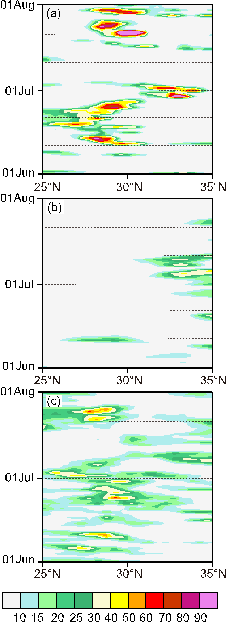Dynamic Downscaling of Summer Precipitation Prediction over China in 1998 using WRF and CCSM4
Date:2014-11-28
IAP scientists evaluated the application of dynamic downscaling method in summer precipitation prediction in typical flood year 1998. Due to the complexity of the East Asian summer monsoon, seasonal climate prediction in China has long challenged meteorologists, especially the extreme climate events that are more difficult to predict at present and cause great social and economic lost. The global climate models have large biases over China resulting from their coarse resolution, so this work uses the WRF model and the Community Climate System Model (CCSM) for seasonal climate prediction experiment, to study whether WRF could improve the CCSM results over China or not. The results showed that the WRF can improve the prediction of extreme flood over the middle–lower reaches of the Yangtze River. The improvements were not only on seasonal scale, but also on sub-seasonal scale. The results were encouraging. This method can be used in operational prediction in the future.

Daily precipitation (mm·day?1) along 110°E?120°E from (a) CN05 observation data, (b) CCSM4 and (c) WRF.
Citation: Ma, J. H., H. J. Wang, and K. Fan, 2015: Dynamic downscaling of summer precipitation prediction over China in 1998 using WRF and CCSM4. Adv. Atmos. Sci., 32(5), doi: 10.1007/s00376-014-4143-y.
Download: http://159.226.119.58/aas/EN/abstract/abstract2591.shtml
